Cameras are everywhere. We carry them in our purses and pockets and mount them to our doorbells. Individuals use them to capture memories, keep in touch and stay entertained. Organizations use them for surveillance, theft prevention, analyzing and interpreting behavior, and marketing.
But all those captured photos and videos create privacy concerns. In our daily life, we’re always gathering media, but what happens to individual privacy when we share or post those images or videos? What happens to a customer’s privacy when his or her face is captured by a business’ security camera or automatic license plate recognition system (ALPR)?
In this article, we will explore the regulations surrounding the use of video and image-gathering systems in the United States, as well as other countries, and spell out the reasons why blurring license plates and faces is important. We will also focus on (pun absolutely intended) the ways in which criminals can use license plate and facial recognition data to steal personal information, along with the challenges involved in effectively blurring license plates and faces in video footage.
The Blurred Line Between Organizational and Individual Needs
The tension between individual privacy and the need for organizations to gather data is a complex issue that has been the subject of ongoing debates and discussions. On one hand, individuals have a right to privacy and the protection of their personal information, which includes things like their name, address, financial information, and biometric data. This information can be vulnerable to abuse, such as identity theft, fraud, or unwanted marketing.
On the other hand, organizations rely on collecting data to understand their customers and make informed decisions about product development, marketing, and other business strategies. They often use data analytics to analyze consumer behavior and make predictions about future trends. This data can be incredibly valuable for companies and can help them gain a competitive advantage.
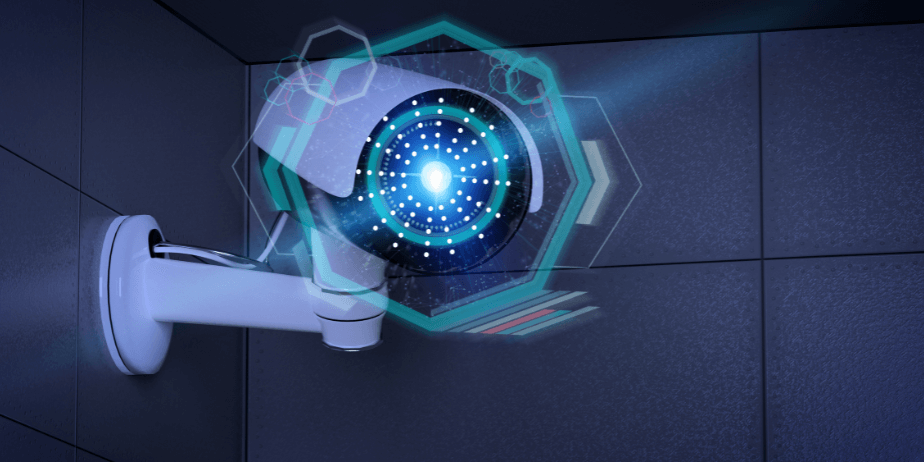
Active security camera. Source: Canva
The main struggle is finding a balance between these two competing needs. Companies must find ways to gather data while also protecting the privacy of individuals. This might involve implementing strict data protection protocols and investing in secure systems to store and process data. Companies should also be transparent about how they collect and use data, giving individuals the ability to control the information they share and how it’s used.
Ultimately, companies must respect the privacy rights of their customers while also making sure they are able to use data in ways that benefit both the business and its customers.
People don’t like to be photographed or videoed without their consent. It creates feelings of anger and vulnerability, not emotions you want people to associate with your organization. With Plate Recognizer, businesses, and law enforcement can gather license plate and vehicle data without creating those feelings of resentment or experiencing personal information protection issues when sharing data.
Who Needs to Blur Photos and Video?
If you gather any kind of data on individuals, you should have a plan for addressing privacy concerns. Automated license plate readers (ALPRs) are used by a wide range of businesses and organizations, including:
- Law enforcement agencies: Police departments use ALPRs to help with investigations and to track wanted vehicles.
- Toll road operators: ANPRs are used by toll road operators to automatically identify and charge drivers who use their roads.
- Parking management companies: Automated license plate readers are used by parking management companies to identify and enforce parking rules and to manage parking lots and garages.
- Retail companies: Retail companies use number plate readers to track customers’ movements and gather data on consumer behavior.
- Insurance companies: Insurance companies use automatic license plate recognizers to gather data on the location and movements of vehicles to help with claims investigations and keep an eye on high-risk areas.
- Private security companies: Private security companies use ALPRs to help protect their client’s assets and monitor their premises.
- Municipalities: Local government entities use license plate readers to enforce parking rules, monitor traffic, and gather data for planning and transportation purposes.
- Fleet management companies: Fleet management companies use ALPRs to monitor the movements and locations of their fleets, as well as to gather data for route optimization and cost reduction.
- Car rental companies: Car rental companies use ANPRs to track their vehicles. They also deploy them to help automate customer billing and logistics.
These are just a few examples of businesses and organizations that use ALPRs. The technology is rapidly growing in popularity, with more organizations adopting it every day as they recognize the benefits it delivers.

Personnel monitoring security cameras. Source: Canva
Why Blur License Plates and Faces from Videos?
Bad people try to steal data to do bad things. Any images or video your organization collects could potentially be intercepted and used in ways your organization did not intend, putting individuals in your community at risk and doing catastrophic damage to your reputation. But our solution brings clarity back to a blurry situation.
License plate information is considered personal data, and as such, is protected by privacy laws in many countries. What makes the characters on a vehicle number plate so important?
A license plate number is attached to a specific vehicle, which is registered to an individual or organization. This means that the following personal information can be associated with a license plate:
- Owner’s name: The registered owner of the vehicle can be linked to the license plate number.
- Home address: The vehicle owner’s home address is attached to the license plate number, so bad actors can use number plate data to find out where a person lives.
- Phone number: The registered owner’s phone number is often included in the vehicle registration information and can be linked to the license plate number.
- Insurance information: The policy number, insurance company, and coverage details are often associated with the registered driver’s plate.
- Driving history: The driving history of the vehicle owner, including any past traffic violations or accidents, can be linked to the license plate number.
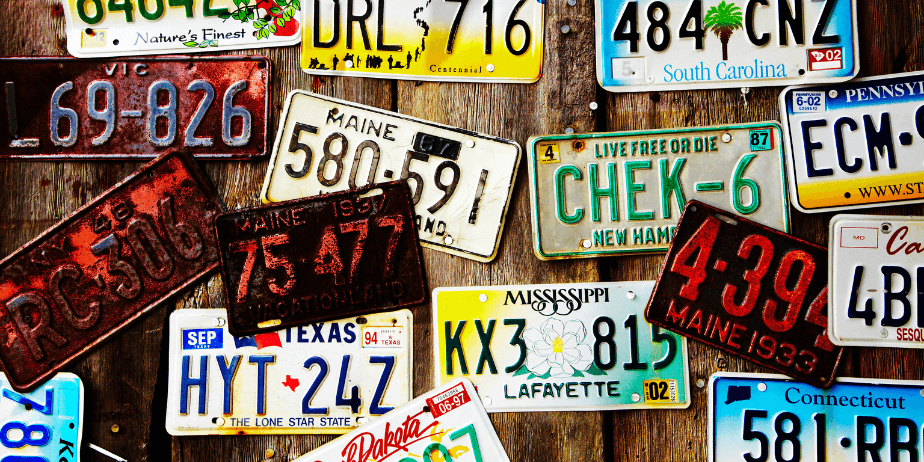
A collection of license plates. Source: Canva
Some organizations use these pieces of personal information for things like marketing and advertising, but data also has the potential to be misused for malicious purposes like stalking.
By blurring license plates and faces in video footage, organizations can help ensure that individuals’ personal information is not misused or disclosed without consent. The concept is pretty simple, but as you’ll see in a bit, actually doing it consistently can be time-consuming and complex.
Blurring license plates and faces can also help to prevent identity theft and fraud. Criminal organizations may use license plate information to track individuals and steal their personal information. By blurring license plates and faces, ALPR systems can make it more difficult for these organizations to access and use personal information. In other words, using our Blur product will make sure consumer privacy stays in focus.
Should I Blur the Videos I Post Online?
People often ask, what are the rules about posting online with license plates or faces visible? That depends on where you’re posting, what information might be gathered from your post, and who can see it. If you’re posting photos of a birthday party on social media in a place only friends and family can access, you’re probably okay, but it’s always best to err on the side of caution.
Avoid posting photos or videos of people without first getting their permission. It’s also always a good idea to blur license plates any time you post a vehicle, even if that vehicle is your own.
Blur Videos isn’t Just About Compliance – It’s Good Business!
The reasons businesses and law enforcement agencies should protect their personal data and the privacy of their customers are crystal clear:
- Legal requirements: Many countries have laws that regulate the collection, storage, and use of personal data. Businesses must comply with these laws to avoid legal consequences. Failure to properly protect personal data can leave your organization with a damaged reputation and hefty fines.
- Customer trust: Protecting personal data builds customer trust in a business. When customers trust a business with their personal information, they are more likely to continue doing business with that company. But once trust is lost, it’s hard to get back.
- Competitive advantage: Businesses that have a reputation for protecting personal data can have a competitive advantage over those that don’t. Customers are more likely to choose businesses with a proven track record of protecting their personal information. And when organizations don’t, word spreads fast.
- Risk management: Failing to properly protect personal data can result in data breaches, which can be costly and damaging to a business’s reputation. By protecting personal data, businesses can reduce the risk of a data breach and the associated damage.
- Reputation: A business’s reputation is critical to its success. If a business fails to protect personal data, this can result in negative media coverage and damage its reputation, which can be difficult to recover from.
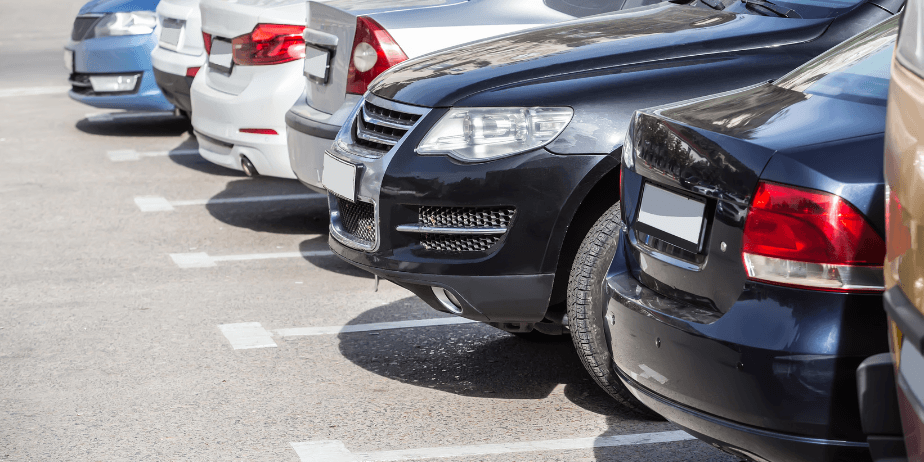
Cars parked with wiped out license plates. Source: Canva
There are times when using Blur is good for your relationship with your target audience. When you’re proactive about privacy protection, it builds trust. It also keeps you out of legal hot water, gives you an advantage over less security-minded competitors, keeps you in compliance with local and federal regulations, and reduces your risk of ending up in a compromising situation.
Speaking of regulations, a number of countries have laws regarding the collection of license plates and photo data. Let’s take a few minutes to bring those into focus.
FOIA and Other United States Regulations
In the United States, the Freedom of Information Act (FOIA) is a key regulation that governs the release of government-held data to the public. Under the provisions of the FOIA, personal information, (and as you can see, there’s a clear line between license plate data and personal information), is protected from public disclosure.
When it comes to ALPR for USA, many states have additional laws that specifically address the collection and storage of license plate data. These regulations vary by state and can affect the use of ALPR systems by law enforcement and other organizations.
For example, some states have laws that completely prohibit the use of ALPR systems for surveillance. Others have laws that allow for the use of ALPR systems for limited purposes, like identifying stolen vehicles or supporting criminal investigations. Some have detailed requirements for how long data can be stored and what can be done with it while it’s retained. A few examples of state laws include:
- California Consumer Privacy Act (CCPA)
- Texas Transportation Code Section 552.130
- Vermont 23 § 1607
- Oregon Senate Bill 639
- Utah Code 41-6a-1701 to 41-6a-1709: Automated License Plate Reader Data Act
Each state is different. It is important for organizations using ALPR systems to be aware of the privacy regulations that apply to their operations and to implement measures to protect personal privacy. Blurring license plates and faces in video footage is one of those measures.
While understanding local and federal regulations takes some work, using our Blur product means you won’t have to lose sight of privacy to get a clear picture of traffic issues that affect your organization.
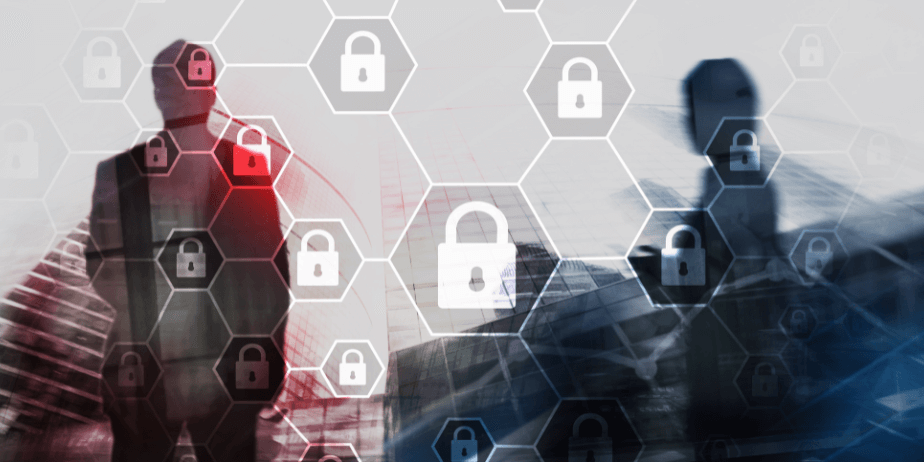
Private information policy. Source: Canva
Blur for Privacy Laws Outside the U.S.
The U.S. isn’t the only country with stringent regulations on gathering, storing, and using ALPR data. These countries also have laws to protect individual privacy.
Blur for the European Union
The General Data Protection Regulation (GDPR) includes specific provisions for protecting personal data. It spells out what’s legal and what isn’t when it comes to the collection and processing of license plate and photo data.
For example, an individual’s data can only be collected for a specific and legitimate reason. It can only be kept for as long as it’s needed, and it has to be accurate. The company or organization responsible for collecting and processing the data has to make sure they follow these rules.
People also have rights when it comes to their personal data. They can see what data is being kept about them, ask for it to be changed if it’s wrong, ask for it to be deleted, and object to how it’s being used.
Overall, the GDPR sets out a clear framework to protect personal data, including license plate and photo data. It makes sure that this data is only used in appropriate ways and that people’s rights are respected.
And it’s not just license plate and photo data that are protected by the GDPR. Other examples of personal data that are regulated include names, addresses, email addresses, and even IP addresses.
Brazil’s LGPD
Anyone who sells goods or services in Brazil needs to comply with Lei Geral de Protecao de Dados (LGPD), the Brazilian equivalent of GDPR. It outlines rules and regulations for how people are allowed to collect, use, process and store personal data collected in the country. Like laws in other countries, it seeks to find a balance between an individual’s right to privacy and the need for organizations to gather data for marketing and analytics.
Canada’s PIPEDA
The Personal Information Protection and Electronic Documents Act (PIPEDA) sets out the rules for the collection, use, and disclosure of personal information, including license plate and photo data, by organizations engaged in commercial activities.
Australia’s Privacy Laws
The Privacy Act 1988 governs the handling of personal information, including license plate and photo data, by Australian both government agencies and private sector organizations. Australia was early to the privacy protection game, and they have continued to tweak legislation involving the collection and handling of individual data, making significant amendments to the Privacy Act in 2014 and again in 2017.
United Kingdom’s DPA 2018
The United Kingdom left the EU in 2020, and they took their concern for privacy protection with them. The Data Protection Act 2018 is how the UK implemented GDPR. It provides specific protections for personal data, including license plate and photo data, and requires organizations to process such data in accordance with data protection principles.
This is by no means a complete list. It’s important to know and understand the privacy laws in your own country before you start collecting and processing license plate data and photo data.
Other Countries with Privacy Protection Laws
There are several other countries across the globe with privacy protection laws, including:
- Japan: The Japanese Personal Information Protection Act (PIPA) sets standards for the collection, use, and storage of personal information.
- South Korea: The Personal Information Protection Act (PIPA) regulates the collection, use, and storage of personal information.
- New Zealand: The Privacy Act 1993 outlines rules for the collection, storage, and use of personal information by government agencies and private sector organizations.
- Hong Kong: The Personal Data (Privacy) Ordinance regulates the collection, use, and storage of personal data in Hong Kong.
- India: The Information Technology (Reasonable Security Practices and Procedures and Sensitive Personal Data or Information) Rules, 2011 lays down standards for the protection of personal data.
- Israel: The Privacy Protection Law sets out rules for the collection, use, and storage of personal information by government agencies and private sector organizations.
- Mexico: The Federal Law on the Protection of Personal Data Held by Private Parties sets standards for the protection of personal data in Mexico.
These are just a few examples of countries with privacy protection laws. It’s worth pointing out that the specific laws and regulations vary from country to country, and that the level of enforcement and compliance is also vastly different depending on where you find yourself.
In each of these countries, privacy laws apply to the use of image and video gathering systems and may impact the way in which personal information is collected, stored, and used. By blurring license plates companies and law enforcement agencies protect the privacy of individuals who are captured on camera. But no matter where you live, if you’re in one of the 90+ countries we serve, the capability to blur license plates with our product is simple and straightforward.
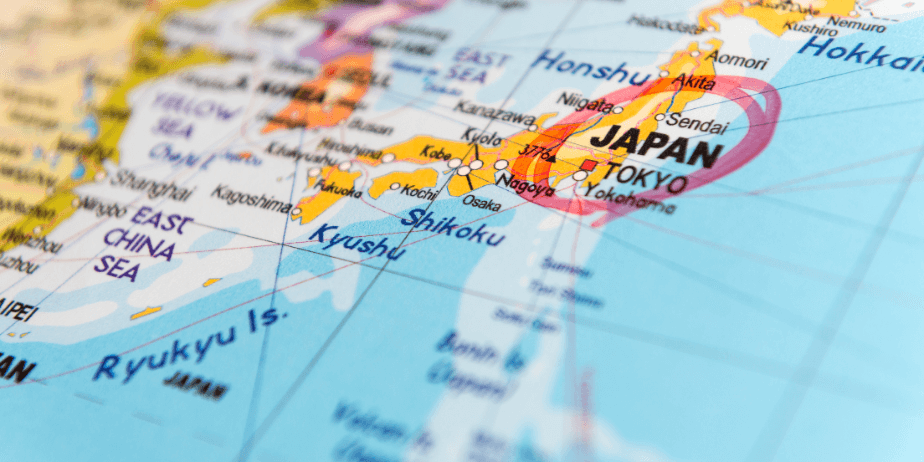
Japan encircled on a map. Source: Canva
How Bad Guys Use License Plates and Facial Recognition to Identify Personal Information
Bad actors can use the license plate and facial recognition data captured by ALPR or ANPR systems to identify personal information so they can use it for malicious purposes. For example, they can use this information to target individuals for theft or fraud or to stalk or harass individuals. Stolen data makes crimes like these easier:
- Car theft: Bad actors can use license plate information captured by ALPRs to locate and steal high-value vehicles.
- Identity theft: Using the information captured by license plate readers, cybercriminals can steal personal information such as home addresses, phone numbers, and other sensitive information to commit identity theft.
- Fraud: Bad actors can use intercepted license plates and facial recognition data to impersonate individuals and commit crimes like credit card fraud, loan fraud, or insurance fraud.
- Stalking: By tracking an individual’s vehicle through license plate information, bad actors can stalk and harass people, putting them in potential danger.
- Espionage: In some cases, bad actors may even use license plates and facial recognition data to spy on individuals or organizations for purposes of espionage or to gather sensitive information.
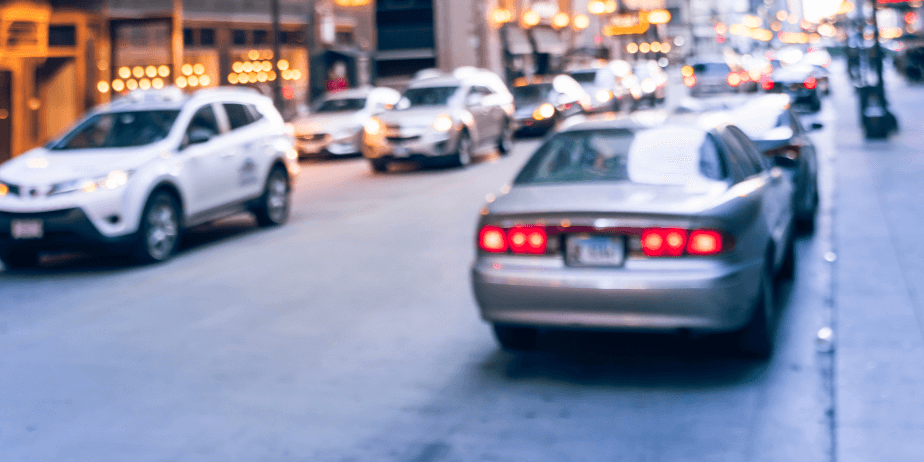
Blurry image of cars on the street. Source: Canva.
Why Blurring License Plates is Complicated
To effectively blur license plates and faces, you have to look at each frame of a video file and remove sensitive information. Video is made up of thousands if not millions of individual frames, and it’s not enough to just blur a few of them.
It’s necessary to carefully analyze each frame to identify license plates and faces, and then use software to blur these features. The process can be time-consuming and resource-intensive. It takes specialized software and expertise to achieve effective results. Our solution has the ability to provide privacy protection one frame at a time.
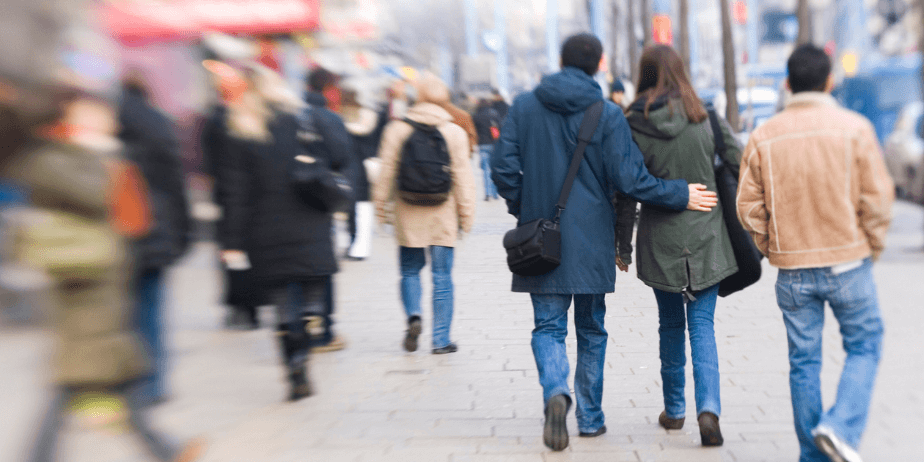
People walking on the street. Source: Canva
Plate Recognizer: A Solution for Blurring License Plates and Faces
At Plate Recognizer, we understand the importance of privacy and security when it comes to the use of license plate recognition (LPR) and facial recognition technologies. That’s why we have developed our Blur product to ensure that license plates and faces are blurred out appropriately in video feeds.
- Blur all kinds of plates
- Detect plates and faces on files large and small
- Blur partial view and dented plates
- Blur multiple plates or faces within an image
- Process all types of faces, even ones with makeup and masks
- Customize blurred plates by adjusting opacity or adding logos
Our Blur product is designed to handle a wide range of scenarios, including license plates and faces that are in partial view, upside-down, slanted, dark, partially covered, and more. Our advanced technology ensures that each frame of the video feed is examined and blurred out appropriately. This means that you can have peace of mind knowing that your customers’ privacy and security are protected.
At Plate Recognizer, we believe that privacy and security are of the utmost importance, and our Blur product is the perfect solution for when you want to see the bigger picture with clarity while still protecting consumer privacy and security. See how easy it is when you sign up for a free trial today.